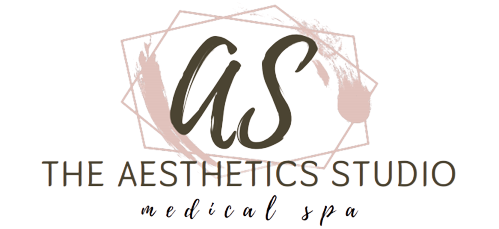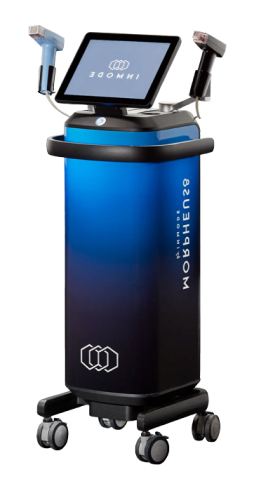On their journey towards younger and rejuvenated skin, many individuals turn to cosmetic treatments as a means to combat signs of aging. Dermal fillers and Botox injections are among the most sought-after solutions, both revered for their ability to smooth wrinkles and enhance one’s overall appearance.
However, despite their similar goals, these two treatments fundamentally differ in their approach and application.
In this blog, we’ll journey to decode the differences between dermal fillers and Botox, shedding light on their unique characteristics, uses, and benefits.
By the end, you’ll have a clearer understanding of which option may be the right choice for your cosmetic goals, helping you make an informed decision on your path to a more youthful, radiant you.
So, let’s dive into the world of dermal fillers and Botox and unravel the secrets behind these age-defying treatments.
Read Also: Botox for Forehead Wrinkles: A Complete Guide
What is Botox?
Botulinum toxin, more commonly known by its acronym Botox(r), has become one of the most acclaimed neurotoxins used in cosmetic injections to temporarily paralyze or weaken specific facial muscles.
Botox effectively minimizes the appearance of wrinkles and fine lines caused by muscle contractions, including frown lines and crow’s feet.
Botox offers an effective non-surgical way to rejuvenate a more youthful appearance without surgery, as well as treating muscle spasms, chronic migraines, and excessive sweating. Botox’s ability to relax muscles makes it a versatile and sought-after solution within aesthetics as well.
| Rediscover Your Radiance with Botox Skincare! |
What are Dermal Fillers?
Dermal fillers are injectable substances used in cosmetic procedures to add volume, plump up the skin, and smooth out wrinkles and fine lines. They typically consist of substances like hyaluronic acid, collagen, or synthetic materials that are carefully injected into specific areas of the face.
Dermal fillers work by filling in hollowed areas, restoring lost volume, and enhancing features such as the lips, cheeks, and jawline. This non-surgical treatment can address a range of concerns, including deep folds, sagging skin, and scars, ultimately leading to a more youthful and rejuvenated appearance.
Dermal fillers are known for their versatility and ability to deliver immediate results with minimal downtime, making them a popular choice for those looking to enhance their facial aesthetics.
What are the differences between Botox and dermal fillers?
-
Mechanism of Action:
- Botox: Botox is a neurotoxin that temporarily paralyzes or weakens specific facial muscles. It works by blocking nerve signals that cause muscle contractions, reducing the appearance of wrinkles caused by muscle movement.
- Dermal Fillers: Dermal fillers, on the other hand, add volume to the skin by filling in wrinkles, lines, and hollowed areas. They do not affect muscle movement but rather plump up the skin to create a smoother and more youthful look.
-
Purpose:
- Botox: Primarily used to treat dynamic wrinkles, which are formed by repetitive muscle movements, such as frown lines, crow’s feet, and forehead wrinkles.
- Traditional Microneedling: The depth of treatment in traditional microneedling is generally consistent and does not involve the additional application of radiofrequency energy.
-
Duration of Results:
- Botox: Results from Botox injections typically last for about 3 to 4 months, after which muscle activity gradually returns, and wrinkles reappear.
- Dermal Fillers: The duration of results varies depending on the type of filler used and the treated area but generally lasts from 6 months to 2 years or more. Some fillers can be longer-lasting.
-
Treatment Areas:
- Botox: Primarily used on the upper face to address expression lines and wrinkles, such as the forehead, between the eyebrows, and around the eyes.
- Dermal Fillers: Can be used in various facial areas, including lips, cheeks, nasolabial folds (smile lines), marionette lines (lines around the mouth), and even for non-facial areas like hands.
-
Procedure and Downtime:
- Botox: Quick and minimally invasive, with little to no downtime. Patients can typically resume their normal activities immediately after treatment.
- Dermal Fillers: Also a relatively quick procedure, but there may be some swelling, bruising, or redness at the injection sites. Downtime varies but is generally short.
-
Maintenance:
- Botox: Requires regular maintenance every few months to sustain results.
- Dermal Fillers: Requires less frequent touch-ups compared to Botox, depending on the type of filler used.
Read Also: Pre & Post-Botox Skincare Recommendations
Conclusion:
It is important to understand the distinctions between dermal fillers and Botox before deciding on a cosmetic procedure. Dermal fillers excel at enhancing volume and contouring specific areas, while Botox targets muscle contractions to lessen the appearance of wrinkles and fine lines.
Each treatment offers its own unique advantages and effectively addresses different concerns. To receive a well-informed consultation on Botox or fillers in Greenwood, IN, please contact us at 317-820 7423 or conveniently book an appointment online at Your Studio Wellness.













